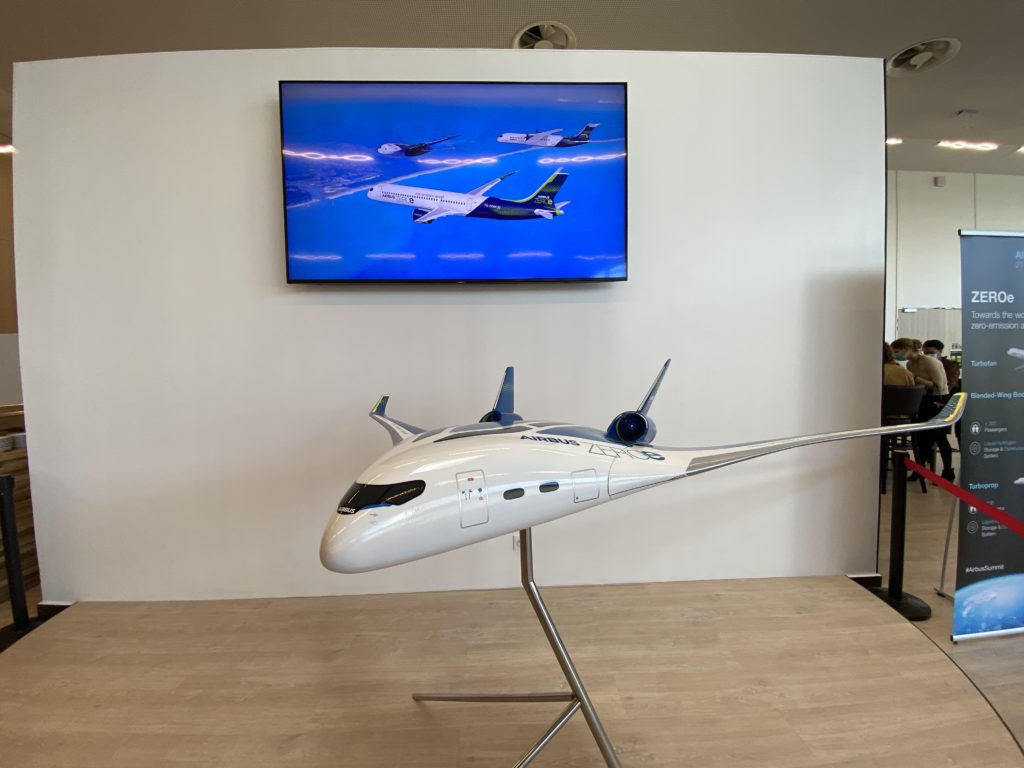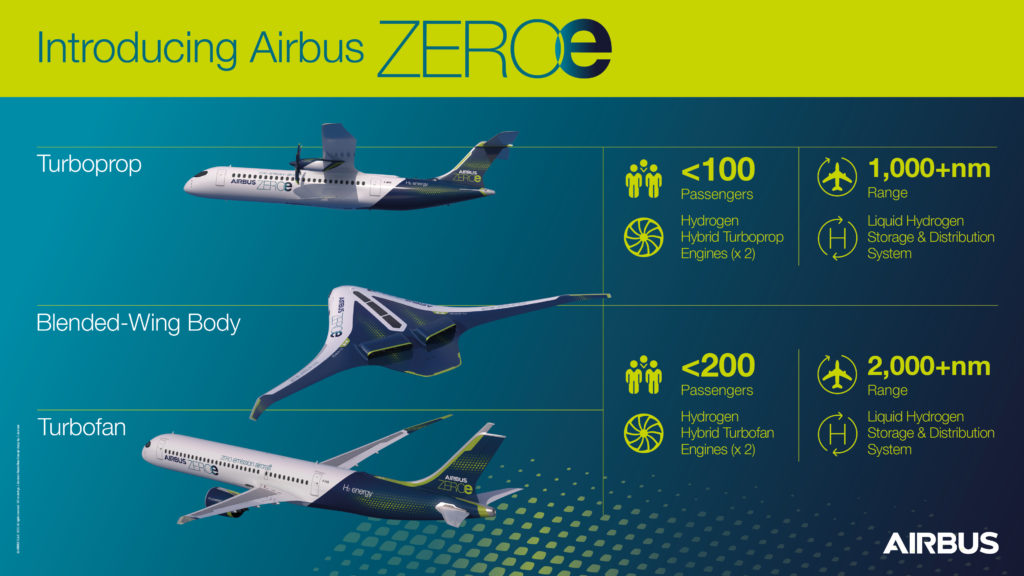Airbus, in 2020, had announced the bold move of going for the launch of hydrogen-powered aircraft, to be entering service in 2035. Airbus offered up many concepts for what they are currently calling the ZeroE aircraft.
Exciting news on this #ZeroEmissionsDay, isn't it? Join us here on Twitter/Periscope at 1400 CET to hear and see more! #zeroe
— Airbus (@Airbus) September 21, 2020
One year later, in a physical setting, Airbus is holding the Airbus Summit 2021, where Airbus, along with its partner ecosystem, intends to take the lead in sustainable aviation. The summit is aptly titled “Pioneering Sustainable Aviation”.

While there have been many discussions over the past two days here about various initiatives to make Aviation more sustainable, including battery-powered aircraft, Sustainable Aviation Fuel and many other initiatives, the one being talked a lot about is Hydrogen-powered aircraft, announced last year.
At a panel where Guillaume Faury, CEO of Airbus SAS, participated today, along with Airlines4Europe, Transport & Environment, International Energy Agency and Heathrow Airport, Faury confirmed that Airbus is very confident of bringing to market a hydrogen-powered zero-emission commercial aircraft in 2035.
Christian Scherer, the Chief Commercial Officer of Airbus, had, at a dinner hosted by Airbus last night, confirmed that Airbus was confident of bringing a hydrogen-powered aircraft. Still, it would most probably be a regional aircraft variant first before the technology matures to become usable for long-haul flying.
Guillaume Faury, in discussions over the past couple of days, has stated repeatedly that while the time till 2025 will be used to get more learnings and insights into the technologies that need to be brought to maturity, and then work will start on getting the first prototype. Airbus will commit “significant” resources to the project in 2028.
Airbus feels that there is still the missing initiative from regulators, who have not put to paper any rules and regulations to give a direction to the development of the next generation of aviation. Per Mr Faury,
Given the number of ruptures and changes that we are going to bring to the aviation sector, we need to onboard the regulators.
He also mentioned, “It is a collective challenge. But 2035, at the scale of aviation, is tomorrow. Therefore, we have to be fast, and we have to be fast together.”
Airbus has previously hinted at three different designs which they are looking to produce in the future:
- Turboprop: Two hybrid-hydrogen turboprop engines, which drive eight-bladed propellers, provide thrust. The liquid hydrogen storage and distribution system is located behind the rear pressure bulkhead. The turboprop design can carry up to 100 passengers for more than 1,000 nautical miles.
- Blended-Wing Body (BWB): The exceptionally wide interior opens up multiple options for hydrogen storage and distribution. Here, the liquid hydrogen storage tanks are stored underneath the wings. Two hybrid-hydrogen turbofan engines provide thrust. The BWB design can carry up to 200 passengers trans-continentally.

Discover the three zero-emission concept aircraft known as ZEROe in this infographic. These turbofan, turboprop, and blended-wing-body configurations are all hydrogen hybrid aircraft.
Bottomline
There is much work to be done, but Airbus is taking the lead in moving the goalpost from a jet fuel-powered aircraft to a hydrogen-powered aircraft, with zero emissions, in the next decade.
What do you think of the new aircraft design that Airbus intends to take to the skies with in the next decade?
Liked our articles and our efforts? Please pay an amount you are comfortable with; an amount you believe is the fair price for the content you have consumed. Please enter an amount in the box below and click on the button to pay; you can use Netbanking, Debit/Credit Cards, UPI, QR codes, or any Wallet to pay. Every contribution helps cover the cost of the content generated for your benefit.
(Important: to receive confirmation and details of your transaction, please enter a valid email address in the pop-up form that will appear after you click the ‘Pay Now’ button. For international transactions, use Paypal to process the transaction.)
We are not putting our articles behind any paywall where you are asked to pay before you read an article. We are asking you to pay after you have read the article if you are satisfied with the quality and our efforts.


Leave a Reply